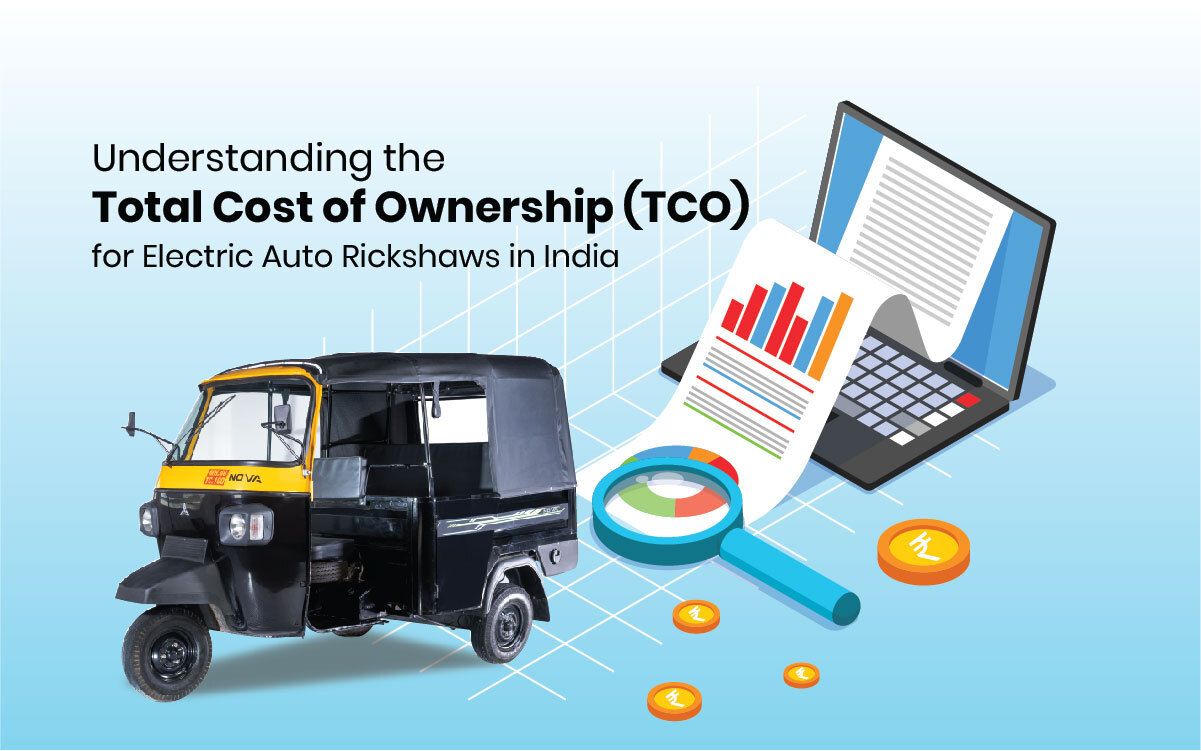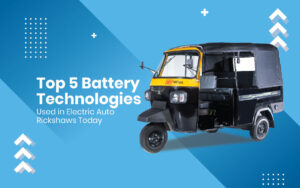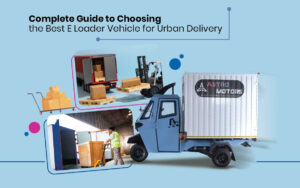Wondering how much it truly costs to own an electric auto rickshaw in India? Let’s break down the Total Cost of Ownership (TCO) and its long-term advantages.
Key Takeaway Summary
- TCO considers all lifetime expenses — purchase price, battery, maintenance, and energy costs.
- Electric autos have lower running costs than traditional petrol or CNG models.
- Astro Nova Electric Rickshaw offers exceptional range, high payload capacity, and minimal maintenance — reducing total ownership costs.
- Smart buyers evaluate TCO, not just upfront price, to ensure long-term savings.
Understanding Electric Auto Rickshaw Ownership Cost (TCO Basics)
When assessing the electric auto rickshaw ownership cost, it’s crucial to look beyond the purchase price. The Total Cost of Ownership (TCO) includes all direct and indirect expenses incurred throughout the vehicle’s lifecycle.
For an electric auto rickshaw, TCO primarily includes:
| Cost Component | Description | Average Range (Indicative) |
| Purchase Price | Initial cost of vehicle | ₹1.5 – ₹2.5 lakh |
| Battery Replacement | Occurs every 3–5 years (depending on usage) | ₹60,000 – ₹90,000 |
| Electricity/Charging Cost | Cost per charge based on power tariff | ₹1–₹1.5/km |
| Maintenance | Fewer moving parts than ICE autos | ₹500–₹1000/month |
| Insurance & Taxes | Annual recurring cost | ₹5,000–₹10,000/year |
By calculating these factors together, one can understand the electric auto cost of ownership more accurately than relying on upfront pricing alone.
How Much Does an Electric Rickshaw Cost in India?
How Electric Autos Reduce Long-Term Ownership Costs
1. Lower Running Costs
The biggest financial advantage of owning a battery auto rickshaw lies in its operating cost. On average, electric autos consume about 4–5 units of electricity for a 100 km ride, translating to just ₹40–₹60 — compared to ₹250–₹300 in CNG or petrol autos.
2. Reduced Maintenance Expenses
Electric autos have fewer mechanical components (no engine oil, clutch, or complex transmission). This drastically reduces wear and tear. Owners save up to 70% in annual maintenance compared to internal combustion engine (ICE) autos.
3. Government Incentives and Subsidies
The Indian government and state EV policies often provide subsidies and tax benefits, which lower the electric auto cost further. Many states also waive registration fees or offer discounted financing options, making e-rickshaws more affordable upfront.
Evaluating the TCO for Astro Nova Electric Rickshaw
While every brand has unique features, Astro Nova Electric Rickshaw stands out as a high-performance, durable, and efficient option that keeps long-term costs in check.
| Feature | Astro Nova Specification | Cost Impact |
| Payload Capacity | 435 kg | High earning potential per trip |
| Top Speed | 55 kmph | Shorter travel time, more daily trips |
| Battery Capacity | 10.24 kWh | Higher energy efficiency |
| Range | 218 km per charge | Fewer charging cycles, lower energy cost |
With these specifications, Astro Nova minimizes downtime, energy expenditure, and maintenance — directly lowering total cost of ownership. Operators covering long daily routes benefit from its extended range and strong payload, translating to higher daily revenue per unit of cost.
Explore Astro Nova E-Rickshaw: Specs, Feature, & Price Breakdown
Comparative Analysis: Electric vs Petrol vs CNG Auto Rickshaw
| Parameter | Petrol Auto | CNG Auto | Electric Auto |
| Fuel Cost (per km) | ₹3.5 – ₹4.5 | ₹2.5 – ₹3 | ₹1 – ₹1.5 |
| Maintenance (per year) | ₹12,000 | ₹9,000 | ₹3,000 – ₹4,000 |
| Average Range | 150 km | 160 km | 200+ km |
| Battery/Fuel Tank Life | NA | 5 years | 4–5 years |
| CO₂ Emissions | High | Moderate | Zero |
Verdict: Over a 5-year ownership period, the electric auto cost of ownership is nearly 40–50% lower than that of conventional vehicles, especially when factoring in fuel savings and government incentives.
Electric Auto Rickshaw vs Petrol Auto: Which One Makes More Sense in 2025?
The Role of Battery Life in TCO Calculation
Battery replacement forms a significant part of electric rickshaw ownership cost. However, advancements in lithium-ion technology have extended the average battery life to 1,000–1,500 charge cycles.
The Astro Nova’s 10.24 kWh battery offers longer lifecycle durability, meaning fewer replacements and improved cost efficiency over time.
Pro tip: Charging at night (off-peak hours) can reduce per-unit energy cost by up to 20%, further lowering operational expenses.
Top 5 Battery Technologies Used in Electric Auto Rickshaws Today
Maintenance and Downtime Considerations
Unlike ICE autos that require frequent oil changes, clutch replacements, and emission checks, electric autos demand minimal upkeep. For fleet owners, this translates into less downtime and higher productivity.
With robust engineering, Astro Nova Electric Rickshaw is designed to withstand India’s rugged road conditions while keeping maintenance simple and affordable — an essential factor in lowering the electric auto cost of ownership.
7 Key Benefits of Owning a Battery-Powered Auto Rickshaw in India
Long-Term Value: Resale and Sustainability Advantage
As EV adoption increases, used e-rickshaws with well-maintained batteries retain higher resale value. Additionally, zero tailpipe emissions align with India’s sustainability goals, making electric autos eligible for future green incentives.
Fleet operators using models like Astro Nova not only gain cost benefits but also contribute to a cleaner urban ecosystem.
How to Calculate Your Own TCO (Quick Formula)
You can estimate the Total Cost of Ownership (TCO) using the following simplified formula:
TCO = Purchase Price + (Energy Cost × Distance Driven) + Maintenance + Battery Replacements – Resale Value
Example (for an average e-rickshaw like Astro Nova):
- Purchase: ₹2,20,000
- Energy Cost (₹1/km × 25,000 km/year × 5 years): ₹1,25,000
- Maintenance (₹5,000/year × 5): ₹25,000
- Battery Replacement: ₹75,000
- Resale: ₹40,000
Total 5-year TCO: ₹4,05,000
That’s nearly ₹2 lakh cheaper than an equivalent CNG rickshaw over the same period.
FAQs: Electric Auto Rickshaw Ownership Cost
Q1. What factors influence the total cost of ownership for electric autos?
A1. TCO includes purchase price, charging costs, maintenance, battery life, and resale value. Efficient models like Astro Nova reduce all these costs through superior engineering.
Q2. How does the range impact TCO?
A2. Higher range means fewer charging cycles and downtime. For example, the Astro Nova offers 218 km range, significantly cutting daily operational costs.
Q3. Are electric autos more profitable than petrol or CNG autos?
A3. Yes. Due to low running costs (₹1/km or less) and minimal maintenance, electric autos yield higher profit margins over 4–5 years.
Q4. How long does an electric auto battery last?
A4. Typically 3–5 years depending on usage. The Astro Nova’s 10.24 kWh battery ensures longer performance and slower degradation.
Q5. Can I charge an e-rickshaw at home?
A5. Absolutely. Most e-rickshaws, including Astro Nova, are designed for standard 15A socket charging — no complex infrastructure required.
Conclusion
Understanding the total cost of ownership (TCO) helps buyers make smarter financial decisions. While the initial cost of a battery auto rickshaw may appear higher, the long-term savings through fuel, maintenance, and government incentives make it the economical choice.With exceptional range, strength, and energy efficiency, the Astro Nova Electric Rickshaw emerges as a future-ready investment — offering drivers, fleet owners, and entrepreneurs unmatched value and reliability on Indian roads.




